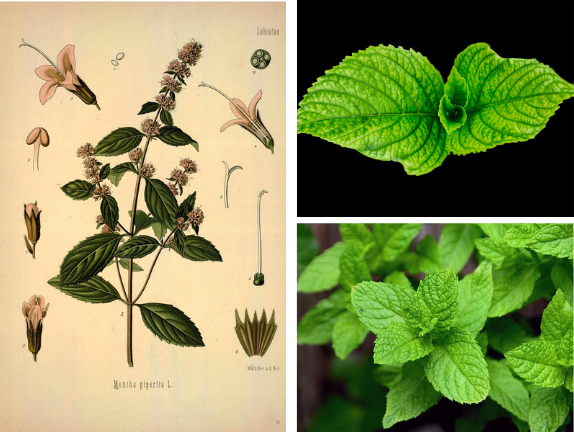Mentha piperita
Latin Name: Mentha piperita
Herb Class/Action: Carminative, nervine, digestive, supports microbial balance
Parts Used: Leaves
Flavors: Pungent, acrid
Energetics: Cooling, drying
Traditional Benefits: Digestive support, immune support, mood support, brain support, supports a healthy inflammatory response, stress support, tension support, sinus + respiratory support
There’s a reason peppermint is such a common post-meal breath refresher, and it’s not just its taste. This ancient herb helps support a healthy inflammatory response along with microbiome balance systemically, whether it’s providing assistance for digestion, hormones, the nervous system, or even cognition and mental clarity.*
Fresh and cooling, Peppermint is an ever-popular herb used to flavor breath mints, chewing gum, toothpaste, and more. But referring to Peppermint as only a breath-refresher would be waaaaay too limiting. Thought to have originated in Northern Africa and the Mediterranean, peppermint has functional health uses dating back to at least 1550 BC.
One of the most popular ways it’s used in herbalism is by drying the peppermint leaves and preparing them as a tea (though fresh peppermint leaves may be chewed as well). As a trusted herbal remedy, Peppermint is most widely used to promote digestive health and support a healthy inflammatory response, though it’s been used to address many other ailments throughout history.

Peppermint has a funny combination of cooling and pungent energy, meaning it can taste and feel both cool and hot, and it can help get things moving while also showcasing calming and soothing properties. Because of this, it may often be combined with warming herbs for additional balance.
So, aside from masking the taste of your dinner, what else does peppermint do? And how does it work? First, peppermint is packed with phenolic acids, volatile oils, tannins, triterpenes, flavonoids, and coumarins. All together, these components result in a rich combination of cognition-boosting, microbiome-balancing, nervous-system balancing, Qi-moving, and carminative (gas-reducing) properties.
Most commonly, Peppermint is used in herbal remedies to help provide relief from gastrointestinal discomfort, while supporting healthy digestion. As a cooling herb, Peppermint addresses concerns related to damp heat and Liver Qi stagnation within the body. It’s been shown to help symptoms such as occasional bloating, gas, indigestion, nausea and more.
The ancient Greeks believed that mint promoted sexual behavior and forbade soldiers from consuming it in order to keep their control/focus.

